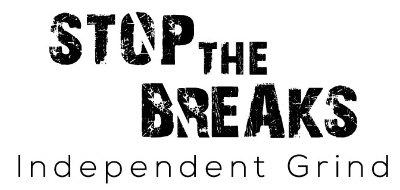
If there’s one thing people constantly consume throughout the world every day, (apart from food of course) it is music. Whether you’re on your long and tiring commute or preparing for exams, cooking a meal, or going for your evening walk, music is your one true partner, literally in sickness and in health. With an ever-increasing demand for new and trendy albums, music production has grown immensely over the years and music streaming platforms have played a massive role.
If we go back in time, music production was mostly controlled by big labels. From production to distribution, only a few known labels had their monopoly. Now, thanks to technology and the internet, the gap between producers and consumers in the content field has been reduced, bringing smaller or individual musicians to the limelight.
Before we head on to the technical details, here are a few words to inspire you if you’re genuinely seeking a career in the music industry. If you are passionate about music and are ready to give it your all, you’re just a few steps away from being the next big music sensation.
Find your niche, record your music, and upload it on one of the many online streaming platforms like Spotify or Soundcloud. Make sure to hook yourself up with a reliable internet connection like Windstream and keep up with the online mayhem -know the sky is your limit! Bring your most creativity out and outshine many.
Read up on how technology has transformed the way music is produced and consumed in today’s time.
Role of Technology in Music Production
What is mostly known as music production, is essentially a two-phased process. The first is music creation. With technology, music creation has become a lot faster as musicians can use various digital tools to record or even create sounds.
Earlier, sounds were played through instruments and musicians had to team up with an entire orchestra to play and record their desired tunes. With technology, many of these sounds are computer-generated and the musician can play them without any help from instrument players.
Music software like GarageBand, FL Studio, Reason, and Logic Pro X1 that allow you to create and mix sounds, while you can also build them up into complete songs.
The second phase or what is known as music production involves editing and enhancing the newly created piece of song to prepare it for the end consumer. Music producers too now, use digital tools to give the final touches to their songs and launch them. Some of the well-known music production tools are Soundtrap, LANDR, Audacity, and Splice.
How is Music Distributed?
One word answer to this is –the Internet. The Internet has completely transformed music production. Earlier, people would line up in front of music stores to get their hands on a new album by their favorite artists. The success of an album would rely on the number of copies sold mainly.
Now, with subscriptions to streaming platforms like Spotify, people have access to an unlimited amount of music, new and old. All you need to do as a musician is upload your song on the platform and read the next subheading!
Market your Music!
With millions of consumers and half a million producers, you really need to shout out about your upcoming music in order to get some attention. Music marketing is a very important step to making your music top the charts.
Artists usually have a good social media presence or collaborate with PR teams to market their music before launch. Having a successful music marketing plan involved targeting popular social networking sites like TikTok, Instagram, and Facebook.
Artists can share snippets of their music, a teaser of their music video if they have any, or share behind-the-scenes clips to excite people to look forward to the launch. Creating a catchy hashtag is another trick to engage people and make them remember about your upcoming song or album. You can conduct live sessions or share video messages with your followers, interact with them, and market your song yourself without production assistance.
Future Trends of the Music Industry
With advancements in technology, whatever is associated with it is bound to keep evolving. Music just like any other digital-oriented medium is expected to adapt and explore new horizons in the years to come.
Artists are inclined to sell their music directly through their own websites, bypassing the commissions they pay to streaming platforms. These artist webpages are known as funnels that allow them to keep track of their traffic and convert them into sales by offering bounties and discounts.
Furthermore, the music industry has promoted inclusivity and diversity, which was extremely rare some decades ago. Artists like Lil Nas, Billie Eilish, BTS, etc. are redefining music and there is still a long way to go.
On the other side, merging anything with technology will automatically expose it to cyber threats. With a million-dollar worth of music stored, you need to be extra careful about cyberattacks and safeguarding your files against issues of piracy.
Hackers tend to leak media before launch resulting in an immense amount of monetary loss for artists. So make sure you have all the essential anti-viruses installed in your systems and use secure internet connections only.
Conclusion
The internet has democratized art and music. What media giants earlier controlled is now open to artists and offers them an equal opportunity to compete in the market. If you’re an aspiring music artist, we hope our article helped and inspired you to take your chances and follow your passion!



